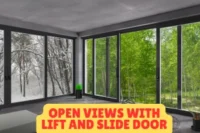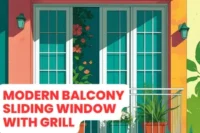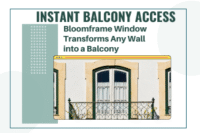Compare PVC and uPVC Before You Build
Published: 12 Jun 25
Back in the 1950s, plastic changed everything. PVC was among the first materials used in many industries due to its low cost and flexibility. But over time, builders saw the need for something more rigid and durable. That’s how uPVC came into the picture. Today, the difference between PVC and uPVC plays a big role in construction and design. While PVC remains useful in flexible products, uPVC is now the go-to for window frames and pipes. Let’s look at how this shift happened—and what it means for your home today.
Understanding uPVC: The Next Generation of Rigid Materials
uPVC stands for unplasticized polyvinyl chloride. It’s a version of PVC but without the added plasticizers that make regular PVC soft and bendy. By removing those chemicals, uPVC becomes hard, strong, and stable—which makes it ideal for use in buildings. It was developed to solve the need for a material that could handle weather, stay rigid, and last for years without warping or cracking. Because of these features, uPVC is widely used in window frames, doors, and plumbing pipes. It doesn’t rust, rot, or fade easily, making it a smart choice for outdoor and long-term use.
Key Differences Between PVC and uPVC
| PVC |
|---|
|
| uPVC |
|---|
|
Applications of uPVC in Window Frames and Plumbing
uPVC is now a popular choice in homes and buildings because it lasts long and needs very little care. Two of the most common places you will find uPVC are in windows and plumbing pipes.
uPVC Windows: Strong, Stylish, and Sealed
uPVC windows are built to protect your home from weather and noise, while also improving energy efficiency.
Tight Sealing: These windows shut tightly, stopping air or water from leaking in. That means no more cold drafts or rain seepage indoors.
Sound & Heat Insulation: uPVC blocks outside noise and keeps the indoor temperature stable. Your home stays quieter and more comfortable all year.
Design Variety: You can choose from different window styles—like sliding, casement, tilt-and-turn—so it fits your space and looks perfectly.
uPVC Pipes: Safe, Reliable, and Hassle-Free
uPVC is also widely used in plumbing because it’s clean, strong, and built to last.
No Rust or Corrosion: Unlike metal pipes, uPVC doesn’t rust or corrode over time. That makes it safe for drinking water and long-term use.
Handles Hot & Cold Water: uPVC pipes work well for both hot and cold water systems. They don’t warp or crack under normal pressure.
Easy Installation: These pipes are lightweight and simple to cut and connect. That makes plumbing work faster and cheaper.
The Impact of Material Choice on Home Design and Durability
The materials you choose for your home don’t just affect how it looks—they also impact how strong and comfortable it feels over time. uPVC is a great example of this. It gives windows and doors a modern, clean look that fits well with today’s home designs. But it does more than just look good. uPVC helps protect your home from rain, heat, and dust, keeping things strong and damage-free. It also improves comfort by blocking outside noise and maintaining indoor temperature, which means your home stays quieter and cooler all year round.
The Role of uPVC in Sustainable Building Practices
As more people focus on building eco-friendly homes, uPVC is becoming a top choice in modern construction. It’s a recyclable and sustainable material that lasts long without harming the environment. One of its biggest benefits is better insulation, which helps lower energy bills by keeping indoor temperatures steady. Because of this, more architects and builders now prefer uPVC for windows and doors in green projects. It’s not just strong and low-maintenance—it also fits perfectly into sustainable building goals that aim to reduce waste and energy use.
Conclusion
Understanding the difference between PVC and uPVC helps you make smarter choices for your home. While PVC is flexible and used in lighter applications, uPVC is strong, durable, and safer—making it the better choice for windows, doors, and plumbing. When planning your next project, don’t just look at the price. Think about long-term value, safety, and ease of maintenance. Here’s a quick tip to remember: If it bends easily, it’s probably PVC. If it stays firm and feels solid, it’s uPVC. Choose wisely, and your home will thank you for years to come.
FAQs
Yes, uPVC is much more durable than PVC. It can handle harsh weather, sunlight, and everyday use without breaking down. That’s why builders use it for long-term home applications.
Yes, uPVC is safe and non-toxic when used as intended. It doesn’t release harmful fumes like PVC can when burned or overheated. That’s why it’s common in homes and offices.
At first, yes—uPVC can cost more than regular PVC. But because it lasts longer and needs less care, it saves money in the long run. Think of it as a smart investment.
uPVC is used in window frames, door panels, plumbing pipes, and sometimes even fencing. It’s strong, weatherproof, and doesn’t need painting. That makes it perfect for both inside and outside the house.





